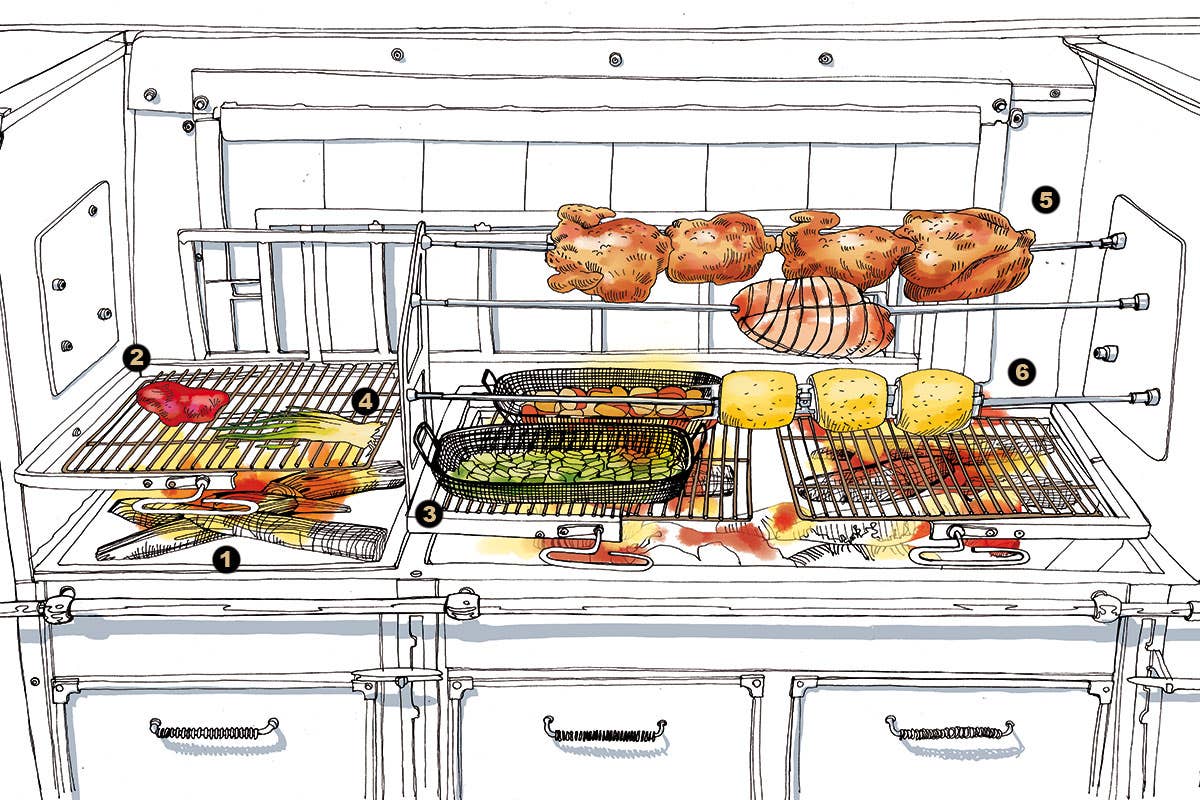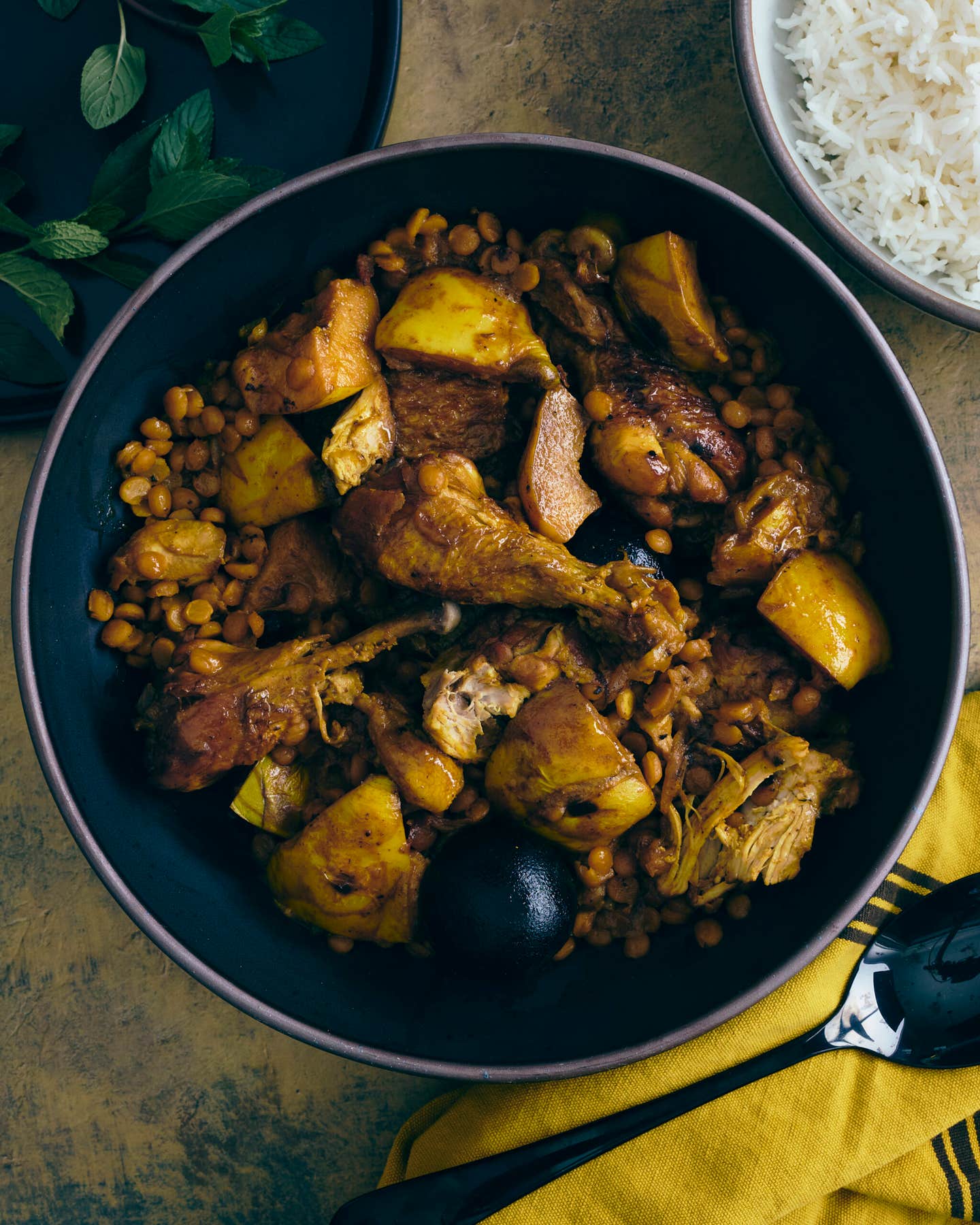
Cooking with fire is a process of discovery. You're figuring out the flames and their rhythms on the grill, which dictate how the food should be prepared. At one of my restaurants, Imperial by Vitaly Paley, in Portland, Oregon, we cook on a custom wood-fired grill (depicted here) and reevaluate our approach every day. Each piece of meat, every vegetable, needs its own treatment—fundamental wisdom that can be applied to home grilling, too.
For fuel, we've found that the denser and harder the wood, the hotter it burns and the longer it stays hot. I like to use a combination. (1) I'll burn a hardwood such as oak or maple for that lasting heat, plus cherry, apple, or other fruitwood, which creates soft, sweet flavors.
Some foods are too delicate for direct contact with the flame but still taste amazing grilled. For the Spanish cut of pork called secreto, a tender muscle that connects the front leg to the belly, we place the meat on a plank made from an old pinot noir wine barrel set over a high flame. (2) The heat and smoke that rise up around the wood cook the meat slowly, while the stave imparts a vanilla-oak taste. This method works just as well with pork loin, fish, seafood still in the shell, even fruits and vegetables. For the plank, any type of fragrant wood, from cedar to alder to oak, works great.
Though grill cooks tend to obsess over meat, vegetables require just as much finesse. I cook them on very high heat, very quickly, so they retain their inherent qualities. For quicker-cooking vegetables such as young carrots, green beans, asparagus, or Brussels sprouts, (3) I blanch them first so they keep their color, put them in a grilling basket over a very hot flame, and shake them until they brown and char around the edges. For vegetables that need more time such as eggplant or leeks, (4) I start them on higher heat to get a good sear, then move them to a cooler part of the grill to cook through.
When it comes to grilling, indirect heat is a term you'll hear a lot. This means placing food out of the way of the fire and the most intense heat to allow for longer, slower, gentler cooking (see How to Cook on a Grill). Instead of filling the bottom of the grill with blazing fuel, we build a fire in the back and work with the radiant heat it throws off, which you can do on your home grill as well. (5) For roasting a bird or large cut of meat, like a leg of lamb, using indirect heat, we employ a rotisserie, which ensures even cooking and is self-basting—the fat and juices bathe and moisten the meat as it turns. (6) I'll even put a pineapple on the rotisserie, because it's such a dense fruit and needs ambient heat to cook and stay succulent.
I'm big on grilling all kinds of fruit. It has to be ripe but not too soft, or it will break apart. I put figs on a white-hot grill (any cooler and they stick), count to ten, flip them, count to five, pull them off, serve them with olive oil and prosciutto, and they're the best thing in the world.
Vitaly Paley is the chef-owner of Imperial by Vitaly Paley, Paley's Place, and Portland Penny Diner in Portland, Oregon.
Keep Reading
Continue to Next Story










